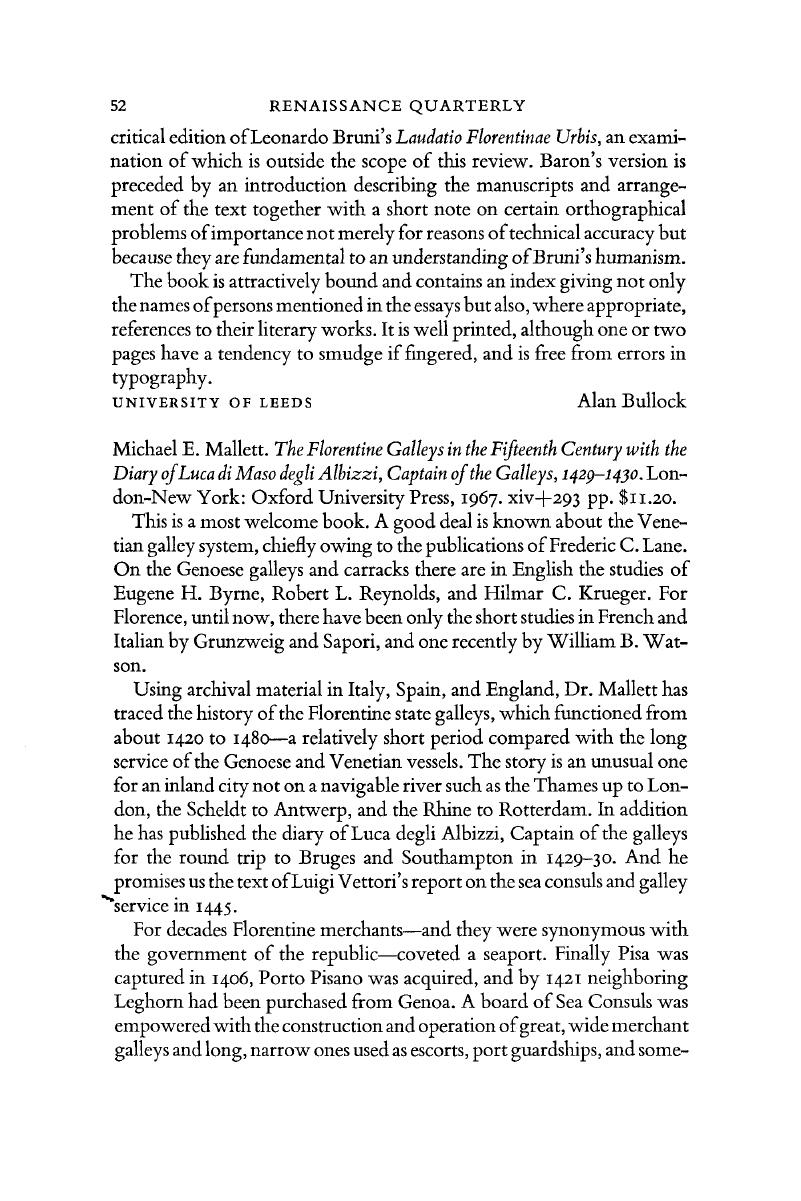No CrossRef data available.
Article contents
Michael E. Mallett. The Florentine Galleys in the Fifteenth Century with the Diary of Luca di Maso degli Albizzi, Captain of the Galleys, 1420-1430. London-New York: Oxford University Press, 1967. xiv+293 pp. $11.20.
Published online by Cambridge University Press: 20 November 2018
Abstract

- Type
- Reviews
- Information
- Copyright
- Copyright © Renaissance Society of America 1970
References
1 Probably because Hoare and the new Cambridge Italian-English dictionary incorrectly translate grana as cochineal, Dr. Mallett does likewise. This may trouble readers who know that cochineal is the red dyestuff from the Central American shield louse found on cacti, which was exported from New Spain (Mexico) to Europe in great quantities after the discovery of the New World. The Mediterranean dyestuff is known as kermes, or ‘grain’ in English literature, and came from a variety of tree louse found in Spain, the Peloponnesus, and Syria.




